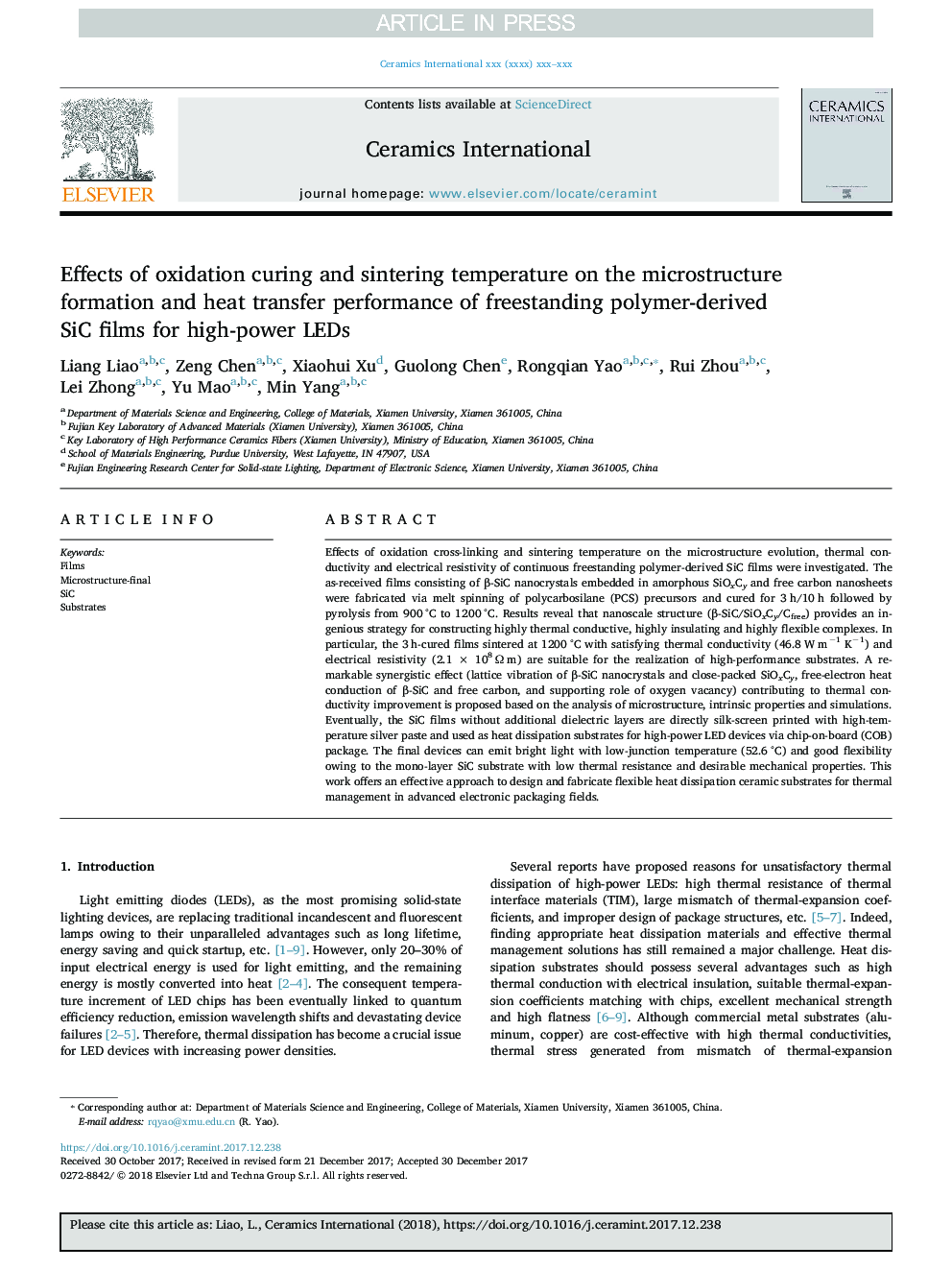| Article ID | Journal | Published Year | Pages | File Type |
|---|---|---|---|---|
| 7887604 | Ceramics International | 2018 | 9 Pages |
Abstract
Effects of oxidation cross-linking and sintering temperature on the microstructure evolution, thermal conductivity and electrical resistivity of continuous freestanding polymer-derived SiC films were investigated. The as-received films consisting of β-SiC nanocrystals embedded in amorphous SiOxCy and free carbon nanosheets were fabricated via melt spinning of polycarbosilane (PCS) precursors and cured for 3 h/10 h followed by pyrolysis from 900 °C to 1200 °C. Results reveal that nanoscale structure (β-SiC/SiOxCy/Cfree) provides an ingenious strategy for constructing highly thermal conductive, highly insulating and highly flexible complexes. In particular, the 3 h-cured films sintered at 1200 °C with satisfying thermal conductivity (46.8 W mâ1 Kâ1) and electrical resistivity (2.1 à 108 Ω m) are suitable for the realization of high-performance substrates. A remarkable synergistic effect (lattice vibration of β-SiC nanocrystals and close-packed SiOxCy, free-electron heat conduction of β-SiC and free carbon, and supporting role of oxygen vacancy) contributing to thermal conductivity improvement is proposed based on the analysis of microstructure, intrinsic properties and simulations. Eventually, the SiC films without additional dielectric layers are directly silk-screen printed with high-temperature silver paste and used as heat dissipation substrates for high-power LED devices via chip-on-board (COB) package. The final devices can emit bright light with low-junction temperature (52.6 °C) and good flexibility owing to the mono-layer SiC substrate with low thermal resistance and desirable mechanical properties. This work offers an effective approach to design and fabricate flexible heat dissipation ceramic substrates for thermal management in advanced electronic packaging fields.
Related Topics
Physical Sciences and Engineering
Materials Science
Ceramics and Composites
Authors
Liang Liao, Zeng Chen, Xiaohui Xu, Guolong Chen, Rongqian Yao, Rui Zhou, Lei Zhong, Yu Mao, Min Yang,
